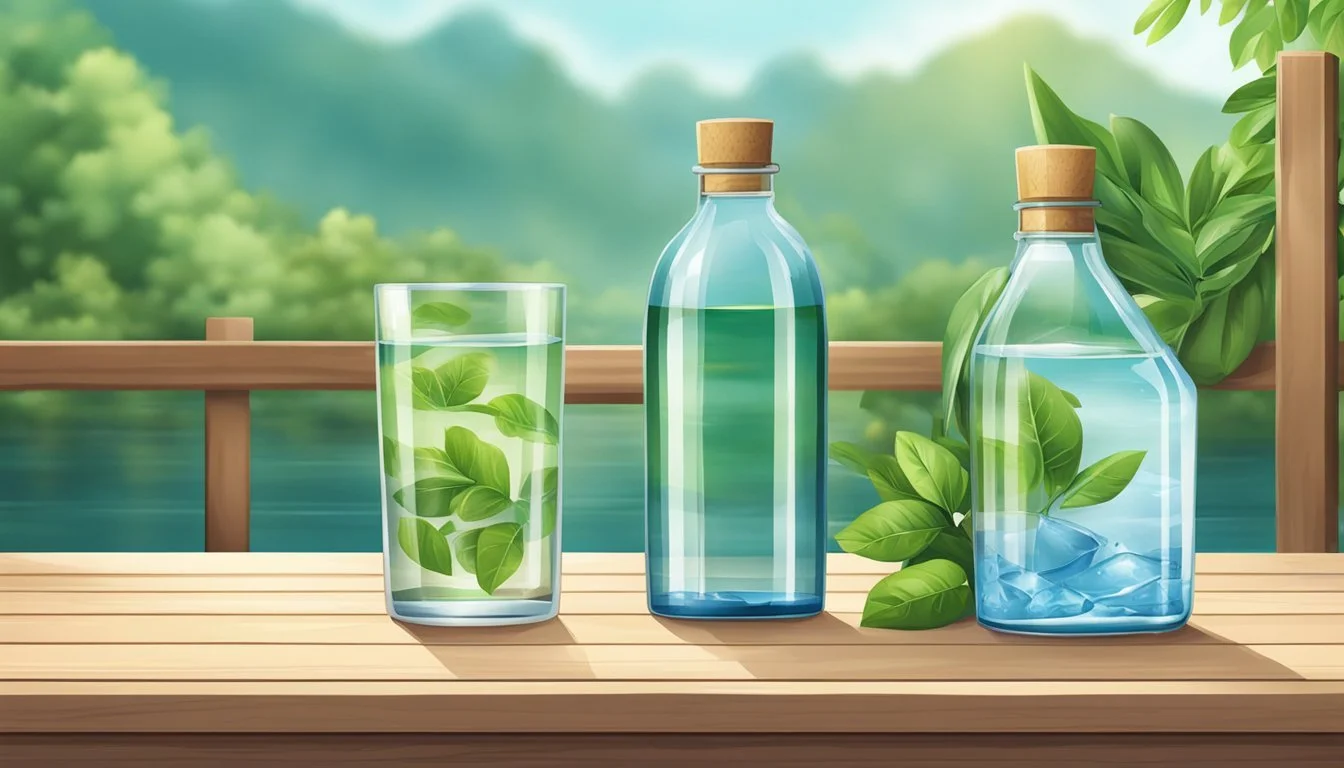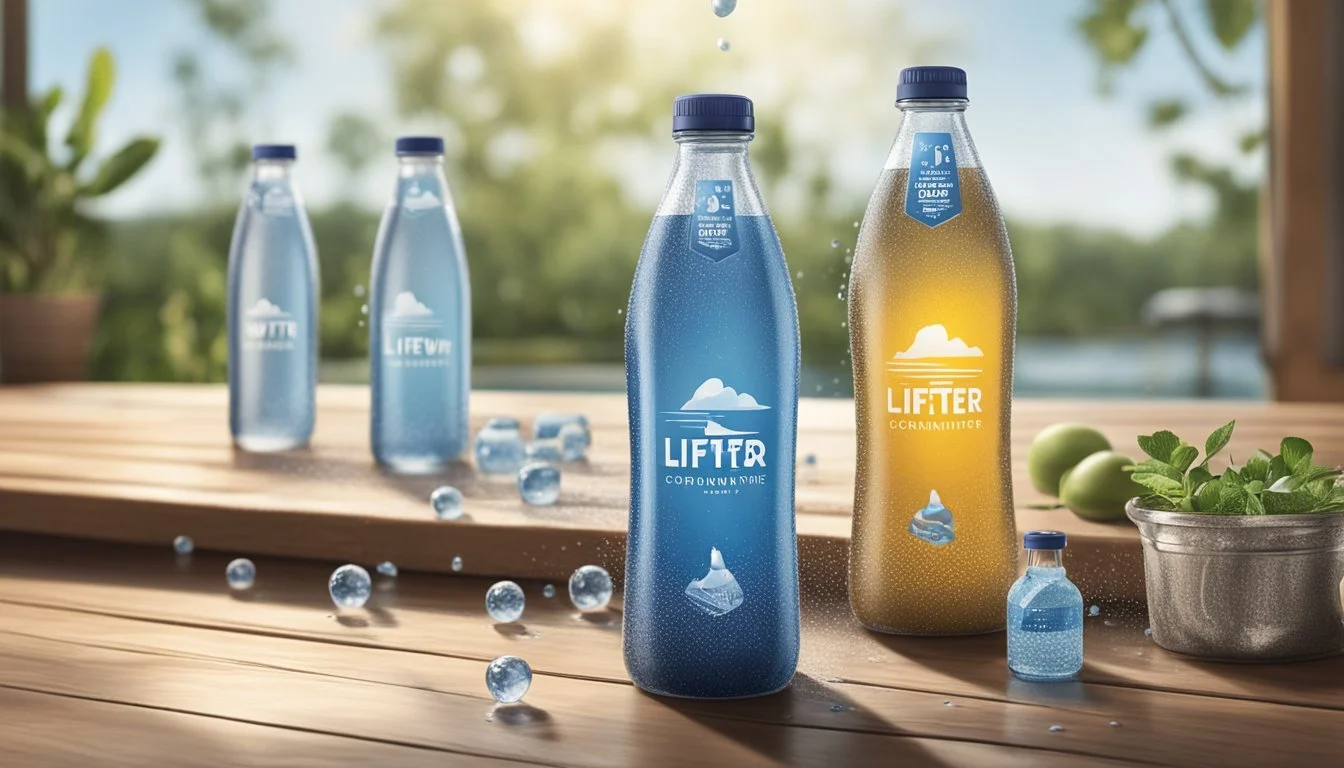LIFEWTR vs. Open Water
Comparing Quality and Sustainability
In a market teeming with bottled water options, discerning consumers often find themselves torn between brands like LIFEWTR and Open Water. Both are premium products that promise quality, but they cater to slightly different consumer needs. LIFEWTR is celebrated for its balanced pH levels ranging from 6.4 to 7.4, making it ideal for those who prefer a neutral to slightly alkaline water.
On the other hand, Open Water, packaged in recyclable aluminum bottles, appeals to eco-conscious buyers seeking to reduce plastic waste. Open Water is sourced and purified for a clean, crisp taste, appealing to individuals prioritizing sustainability and taste. With these distinctions in mind, consumers can make an informed choice based on their hydration needs and environmental considerations.
In terms of taste, both brands offer distinct experiences. LIFEWTR is known for its smooth and subtle flavor, enhanced with essential minerals. Conversely, Open Water prides itself on its pure and refreshing quality, which lacks any plastic aftertaste thanks to its aluminum packaging. This comparison highlights that the choice between LIFEWTR and Open Water ultimately hinges on personal preferences and priorities.
Brand Overview
LIFEWTR and Open Water represent two distinct approaches in the bottled water industry. LIFEWTR focuses on artistic design and premium quality, while Open Water emphasizes sustainability through eco-friendly packaging.
LIFEWTR: PepsiCo's Premium Water Brand
LIFEWTR, a product of PepsiCo, stands out as a premium bottled water known for its artistic and unique packaging. Each bottle showcases designs by emerging artists, making it not just a hydration choice but also a visual treat.
The water is purified through reverse osmosis and infused with electrolytes for taste.
LIFEWTR typically has a pH level between 6.4 to 7.4, which is close to neutral. Its marketing highlights creativity and innovation, appealing to consumers who value aesthetics along with quality. The bottles are made from PET plastic, which is recyclable and BPA-free.
Open Water: Eco-Friendly Packaging Innovator
Open Water sets itself apart with its commitment to sustainability. The company uses aluminum packaging for its water bottles, which are infinitely recyclable.
This reduces environmental impact compared to traditional plastic bottles. Open Water's packaging is BPA-free, further enhancing its appeal for health-conscious consumers.
They also participate in carbon offset programs to minimize their carbon footprint. Their marketing focuses heavily on eco-friendly initiatives, resonating with environmentally-conscious individuals.
By combining renewable energy sources in their production process, Open Water aims to offer a sustainable alternative in the bottled water market.
Water Source and Purification
LIFEWTR and Open Water utilize different methods to source and purify their products, which impacts the taste and quality. It's important to understand how each brand approaches these processes.
Sourcing: Natural Springs vs. Public Water Supplies
LIFEWTR sources its water from public water supplies. This means that the water starts as tap water before going through extensive purification.
On the other hand, Open Water sources its water from natural springs. This choice of sourcing aims to provide water with fewer initial impurities, often resulting in a cleaner taste.
Both methods have their benefits. Water from public supplies must meet stringent regulatory standards. Conversely, natural springs offer geographic and mineral uniqueness that can enhance the water's profile.
Purification Process: From Filtration to Bottling
The purification processes for LIFEWTR and Open Water involve several steps to ensure purity.
LIFEWTR uses a thorough filtration process that includes reverse osmosis. Reverse osmosis is a method that pushes water through a semi-permeable membrane to remove contaminants and impurities.
Open Water also employs a robust filtration process, including carbon filtration and UV treatment. These steps help remove impurities and any potential contaminants. Filters remove physical particles, while UV treatment disinfects the water.
Both brands invest significantly in their purification processes. This attention to detail ensures that the final product is not only safe but also refreshingly pure. The combination of different purification methods helps achieve a clean taste and consistent quality.
Nutritional and Health Benefits
LIFEWTR and Open Water are both popular bottled water brands known for their potential health benefits. Key areas of focus include hydration and fluid balance, as well as essential minerals and electrolytes.
Hydration and Fluid Balance
Proper hydration is crucial for maintaining overall health. LIFEWTR and Open Water both aim to support optimal hydration.
LIFEWTR: Known for its purified water, LIFEWTR ensures proper hydration, helping to maintain bodily functions including temperature regulation and nutrient transportation. The brand emphasizes fluid balance, aiding in muscle function and nerve signaling.
Open Water: Marketed as ultra-purified, Open Water also supports hydration. It emphasizes the importance of water for cellular processes and fluid balance, assisting in physical performance and cognitive function.
Both brands highlight hydration benefits essential for maintaining vital physiological processes.
Essential Minerals and Electrolytes
The presence of minerals and electrolytes in water can contribute to its nutritional value.
LIFEWTR: It often includes minerals such as calcium and potassium bicarbonate, which help regulate pH balance. These nutrients support muscle function and cardiovascular health. Electorlytes in LIFEWTR also aid in maintaining proper hydration levels.
Open Water: This brand focuses less on added minerals but ensures minimal presence of sodium and other impurities. While it doesn’t boast the same level of mineral fortification, its purity makes it a healthy hydration choice.
Both LIFEWTR and Open Water cater to consumers seeking benefits from essential minerals and electrolytes, though with different approaches.
Taste and pH Levels
Taste and pH levels play a significant role in distinguishing bottled waters. PH balance can impact flavor, while taste tests reveal subtle differences in purity and mineral content.
The Taste Experience: Pure and Crisp?
LIFEWTR offers a clean, crisp taste appreciated by many consumers. Enhanced with electrolytes for taste, it aims to provide a refreshing drinking experience.
Open Water is often praised for its pure and natural taste, thanks to its minimal processing and sourcing from pristine locations. Enthusiasts highlight its smooth finish.
Countless taste tests have been conducted on premium bottled waters like Smartwater, Aquafina, Dasani, and Fiji. Through these tests, LIFEWTR and Open Water are noted for their high quality, vying closely in consumer preferences.
pH Balance and Its Impact on Flavor
The pH level reflects a water’s acidity or alkalinity, influencing its taste. LIFEWTR has a pH range between 6.4 to 7.4, slightly acidic to neutral, contributing to its distinct flavor profile.
Open Water generally holds a pH close to 7, presenting a more neutral taste, which many find refreshing and smooth.
Other brands, such as Aquafina with a pH of 5.95, and Smartwater, also provide varied experiences based on their pH levels. These variations can significantly affect the taste, making the choice a matter of personal preference.
Environmental Considerations
Both LIFEWTR and Open Water have unique approaches to minimizing environmental impact. Key areas of focus include their bottle manufacturing processes and recycling, as well as their sustainability efforts.
Bottle Manufacturing and Recycling
LIFEWTR utilizes 100% recyclable plastic bottles for its products. This ensures that the materials can be reused, rather than contributing to landfill waste. Despite their recyclability, plastic bottles still pose environmental challenges, including the energy-intensive manufacturing process and the risk of pollution if not properly disposed of.
Open Water, conversely, opts for aluminum packaging, a material known for its high recyclability and lower environmental footprint. Aluminum can be recycled indefinitely without losing quality, making it a more sustainable option compared to plastic.
Fiji Water and Evian also face criticism regarding their use of plastic bottles. Although some brands like Voss have introduced glass bottles as a sustainable alternative, the transportation of these heavier materials can offset some of the environmental benefits due to increased carbon emissions.
Sustainability Efforts by Brands
LIFEWTR has implemented programs to support recycling and environmental protection. They aim to increase the recycling rate and reduce the environmental impact through various initiatives. Additionally, LIFEWTR’s parent company participates in global environmental protection programs, aligning its goals with international sustainability standards.
Open Water positions itself as a sustainability-focused brand. It actively contributes to reducing single-use plastics and partners with environmental organizations to further its commitment. By using aluminum cans, Open Water addresses the recycling challenges associated with plastic bottles and promotes a circular economy.
Both brands’ approaches highlight the importance of sustainable practices. While LIFEWTR focuses on recycling and corporate partnerships, Open Water emphasizes aluminum packaging and environmental collaboration. This reflects a broader industry trend where brands must balance product convenience with environmental responsibility.
Market Position and Consumer Preferences
LIFEWTR and Open Water both vie for consumer attention in the crowded bottled water market, leveraging unique branding strategies and consumer loyalty.
Comparing Market Share and Distribution
LIFEWTR, a product of PepsiCo, is positioned as a premium water brand and enjoys wide distribution through numerous retail and grocery chains. It has carved out a niche by emphasizing art and design on its packaging, often collaborating with emerging artists to create visually appealing bottles. This strategy not only draws in consumers but also builds a loyal customer base.
Open Water, on the other hand, highlights its sustainability credentials. Packaged in 100% recyclable aluminum cans, it appeals to environmentally-conscious consumers. Although not as widespread as LIFEWTR, Open Water is easily found in niche markets, health food stores, and online platforms. This brand's focus on reducing plastic waste resonates with a growing segment of the market, particularly among younger consumers.
Packaging and Brand Loyalty
LIFEWTR's packaging is a significant component of its brand identity. The bottles feature a bold, artistic design created by emerging artists, making them stand out on shelves. This commitment to supporting the arts aligns with LIFEWTR's premium positioning and appeals to consumers who appreciate aesthetics and creativity. Such design-driven marketing helps LIFEWTR foster a strong brand loyalty.
Conversely, Open Water's packaging is minimalistic but functional, focusing on eco-friendly practices. The use of aluminum cans not only distinguishes it from competitors but also underlines its commitment to sustainability. Consumers who prioritize environmental impact are likely to remain loyal to Open Water. This aspect of packaging is crucial for brand loyalty as it emphasizes the company's dedication to reducing plastic waste, appealing to eco-conscious buyers.
Additional Considerations
When comparing LIFEWTR and Open Water, it is essential to look beyond the basic qualities of taste and purity. Certifications, regulatory compliance, and innovations in the water industry significantly impact the consumer experience and the product's sustainability.
Certifications and Regulatory Compliance
Both LIFEWTR and Open Water adhere to stringent regulatory standards, ensuring safety and quality. LIFEWTR is regulated by the FDA and meets all necessary health guidelines. It undergoes rigorous testing to maintain its status as a purified bottled water with added electrolytes for taste.
Open Water is marketed as a sustainable option, often coming in eco-friendly aluminum cans. It also complies with FDA regulations, emphasizing its commitment to safety and compliance. The brand focuses on reducing environmental impact while providing high-quality, purified water.
Certifications from recognized bodies like the NSF International or the Safe Quality Food Institute add credibility to these brands. Consumers should look for these marks to ensure the water meets high standards. The presence of such certifications often signifies adherence to best practices in processing, packaging, and distribution.
Innovations in the Water Industry
LIFEWTR and Open Water have both contributed to innovations within the bottled water market. LIFEWTR is known for its artistic packaging, featuring designs by emerging artists, which appeals to consumers interested in art and creativity. This approach not only differentiates the brand but also supports the art community.
In terms of water processing technology, LIFEWTR employs advanced filtration methods such as reverse osmosis, ensuring the removal of impurities and maintaining a balanced pH level. This process enhances the nutritional value by providing essential minerals.
Open Water stands out with its environmentally conscious innovations. The use of aluminum cans, which are infinitely recyclable, reduces plastic waste and the carbon footprint. The brand also champions the vapor distillation process, a method where water is turned into steam and then condensed back into liquid, ensuring high purity levels akin to distilled water.
Both brands emphasize wellness and sustainability, reflecting broader industry trends towards eco-friendly practices and advanced purification technologies. The endeavor to balance quality with environmental impact marks their distinct contributions to the water industry.
More About LIFEWTR
Icelandic Glacial vs LIFEWTR: Which Bottled Water is Better?
LIFEWTR vs Kirkland Signature: Which Bottled Water is Better?
LIFEWTR vs Mountain Valley Spring Water: Which Bottled Water is Better?
LIFEWTR vs Richard's Rainwater: Which Bottled Water is Better?
LIFEWTR vs Whole Foods Italian Still Mineral water: Which Bottled Water is Better?
More About Open Water
Aqua Carpatica vs Open Water: Which Bottled Water is Better?
Cascade Mountain vs Open Water: Which Bottled Water is Better?
Core Hydration vs Open Water: Which Bottled Water is Better?
Crystal Geyser vs Open Water: Which Bottled Water is Better?
Hawaii Volcanic vs Open Water: Which Bottled Water is Better?
Hawaiian Springs vs Open Water: Which Bottled Water is Better?
Icelandic Glacial vs Open Water: Which Bottled Water is Better?
Mountain Valley Spring Water vs Open Water: Which Bottled Water is Better?
Nestle Pure Life vs Open Water: Which Bottled Water is Better?
Open Water vs Kirkland Signature: Which Bottled Water is Better?
Open Water vs Whole Foods 365: Which Bottled Water is Better?
Richard's Rainwater vs Open Water: Which Bottled Water is Better?
San Pellegrino vs Open Water: Which Bottled Water is Better?
Solan de Cabras vs Open Water: Which Bottled Water is Better?
Talking Rain AQA vs Open Water: Which Bottled Water is Better?
Whole Foods Italian Still Mineral water vs Open Water: Which Bottled Water is Better?





